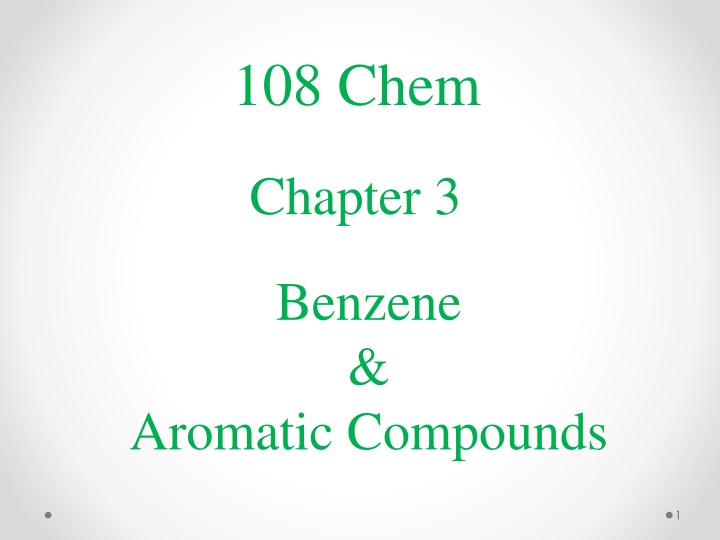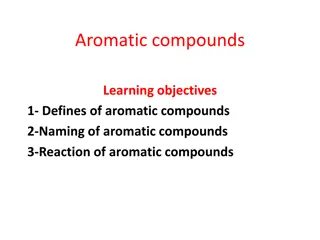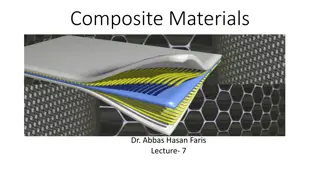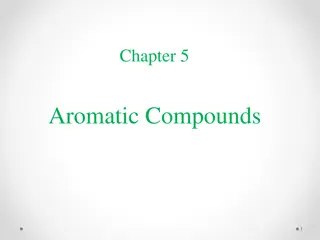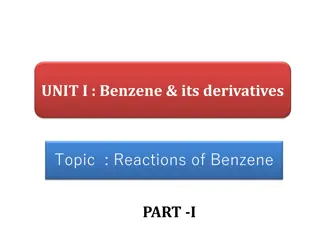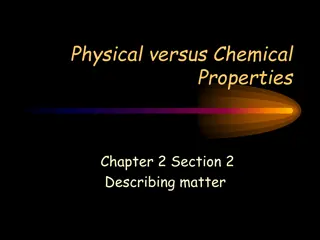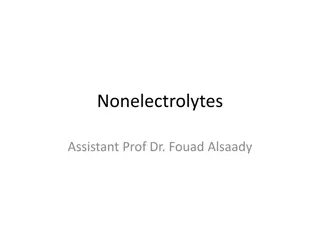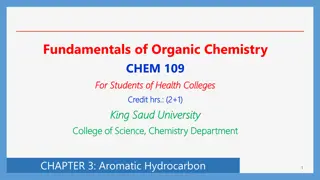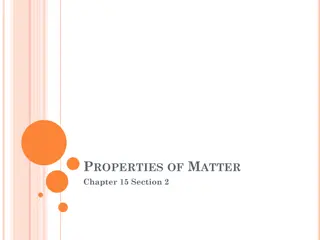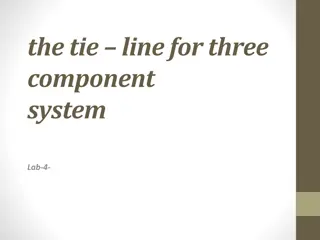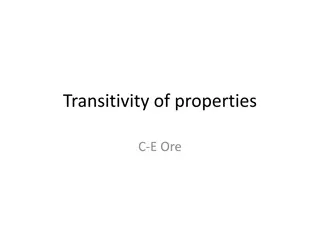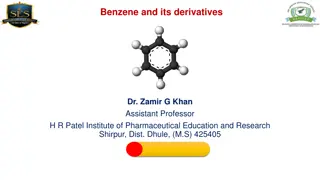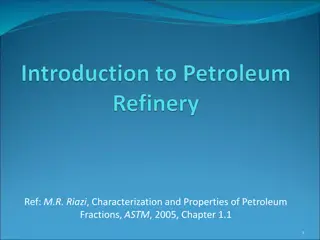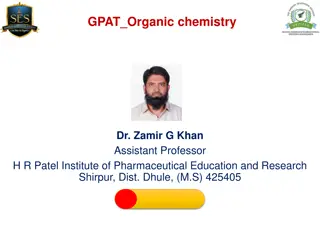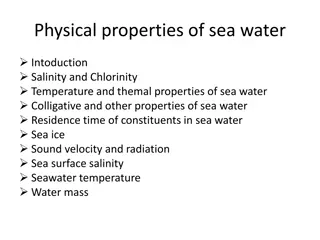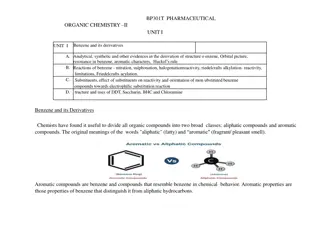Structure and Properties of Benzene
Benzene, a key aromatic compound, is characterized by its unique resonance structure and planar geometry. Explore the Kekule structure, orbital model, and resonance energy of benzene to understand its stability and bonding nature.
Download Presentation

Please find below an Image/Link to download the presentation.
The content on the website is provided AS IS for your information and personal use only. It may not be sold, licensed, or shared on other websites without obtaining consent from the author.If you encounter any issues during the download, it is possible that the publisher has removed the file from their server.
You are allowed to download the files provided on this website for personal or commercial use, subject to the condition that they are used lawfully. All files are the property of their respective owners.
The content on the website is provided AS IS for your information and personal use only. It may not be sold, licensed, or shared on other websites without obtaining consent from the author.
E N D
Presentation Transcript
108 Chem Chapter 3 Benzene & Aromatic Compounds 1
The expressing aromatic compounds came to mean benzeneand derivatives. Structure of Benzene: Resonance Description 1.It contains a six-membered ring and three additional degrees of unsaturation. 2.It is planar. 3.All C C bond lengths are equal. 2
The Kekule Structure for Benzene: In 1865, Kekul proposed a reasonable structure for benzene. He suggested that six carbon atoms are located at the corners of a regular hexagon, with one hydrogen atom attached to each carbon atom. To give each carbon atom a valence of 4, he suggested that single and double bonds alternate around the ring (what we now call a conjugated system of double bonds). Kekul suggested that the single and double bonds exchange positions around the ring so rapidly that the typical reactions of alkenes cannot take place. 3
Kekuls formulas represent two identical contributing structures to a single resonance hybrid structure of benzene. Modern physical measurements support this model for the benzene structure. Benzene is planar, and each carbon atom is at the corner of a regular hexagon. All of the carbon carbon bond lengths are identical: 1.39 , intermediate between typical single (1.54 ) and double (1.34 ) carbon carbon bond lengths. 4
Orbital Model for Benzene: Each carbon atom in benzene is connected to only three other atoms (two carbons and a hydrogen). Each carbon is therefore sp2 -hybridized, as in ethylene. It also explains its hexagonal shape, with H-C-C and C-C-C angles of 120 . An orbital representation of the bonding in benzene. Sigma (s) bonds are formed by the end-on overlap of sp2 orbitals. In addition, each carbon contributes one electron to the pi (p) system by lateral overlap of its p orbital with the p orbitals of its two neighbors. 5
Symbols for Benzene: Two symbols are used to represent benzene. One is the Kekul structure, and the other is a hexagon with an inscribed circle, to represent the idea of a delocalized pi electron cloud. The Resonance Energy of Benzene The real benzene molecules are more stable than the contributing resonance structures (the hypothetical molecule 1,3,5-cyclohexatriene) by about 36 kcal/mol (86 - 50 = 36). 6
The Resonance Energy of Benzene We define the stabilization energy, or resonance energy, of a substance as the difference between the actual energy of the real molecule (the resonance hybrid) and the calculated energy of the most stable contributing structure. For benzene, this value is about 36 kcal/mol. This is a substantial amount of energy. Consequently, as we will see, Benzene and other aromatic compounds usually react in such a way as to preserve their aromatic structure and therefore retain their resonance energy. 7
Aromatic Character: The (4n + 2 ) Rule A molecule must be cyclic. A molecule must be planar. A molecule must be completely conjugated. A molecule must satisfy H ckel s rule, and contain a particular number of electrons. 4n+2 electrons ( n= 0, 1, 2, 3, .= 2, 6, 10, 14, .) 8
Examples: Cyclobutadiene Not aromatic Cyclopentadiene Not aromatic Benzene Aromatic Anthracene Aromatic Cyclooctatetraene Not aromatic Naphthalene Aromatic 9
Examples: Aromatic Not aromatic Not aromatic Aromatic Not aromatic Not aromatic Not aromatic Aromatic Not aromatic 10
Examples: Thiophene Aromatic Furan Aromatic Pyrrole Aromatic N H N N Pyridine Aromatic Quinoline Aromatic 1H-Indole Aromatic 11
Nomenclature of Aromatic compounds Common names have acquired historic respectability and are accepted by IUPAC. Examples include: 12
Monosubstituted benzenes that do not have common names accepted by IUPAC are named as derivatives of benzene. OCH2CH3 allylbenzene vinylbenzene ethoxybenzene ethynylbenzene 13
When the C6H5- group is named as a substituent, it is called a phenyl group. The phenyl group is often abbreviated as C6H5- , Ph- or Benzyl group, C6H5CH2- is an alternative name for the phenylmethyl group. It is sometimes abbreviated Bn. Examples: 14
When two substituents are present, three isomeric structures are possible. They are designated by the prefixes ortho-, meta-, and para- (abbreviated as o-, m-, and p-) or by the use of numbers. Examples: 3-Bromotoluene m-bromotoluene 15
When more than two groups are present on the benzene ring, their positions must be indicated by the use of numbers. Examples: 2,3-dicloroaniline 16
Polycyclic Aromatic Hydrocarbons: Biphenyl C12H6 17
Reaction of Benzene A- Electrophilic Aromatic Substitution Some of the most important reactions of aromatic compounds are those in which an electrophile replaces one of the hydrogen atoms of the ring. These reactions, called electrophilic aromatic substitutions (EAS). The Mechanism of Electrophilic Aromatic Substitution 18
Halogenation of Benzene Benzene reacts with bromine and chlorine in the presence of Lewis acids ( iron chloride (FeCl3) for chlorination, and iron bromide (FeBr3) for bromination). 20
Nitration of Benzene Benzene undergoes nitration on reaction with a mixture of concentrated nitric acid and concentrated sulfuric acid. 21
Sulfonation of Benzene Benzene reacts with concentrated or fuming sulfuric acid, and the electrophile may be sulfur trioxide (SO3), or protonated sulfur trioxide (+SO3H). 22
Friedel-Crafts Alkylation The Electrophile is a carbocation, which can be formed either by removing a halide ion from an alkyl halide with a Lewis acid catalyst (for example, AlCl3). 23
Friedel-Crafts Acylation The Electrophile is an acyl cation generated from an acyl halide, the reaction requires the addition of at least one equivalent of a Lewis acid (such as AlCl3). The product of the reaction is an aryl ketone. 24
Reaction of Benzene B- Reactions of the Side Chain of Alkylbenzene 1- Oxidation of the Side Chain Alkylbenzenes with alkyl groups longer than methyl are ultimately degraded to benzoic acids. 25
2- Halogenation of the Side Chain Chlorine and bromine can be made to replace hydrogen atoms that are on a benzylic carbon, such as the methyl group of toluene. Benzylic halogenation is carried out in the absence of Lewis acids and under conditions that favor the formation of radicals. 26
Substituents Can Affect Both the Reactivity of the Ring and the Orientation of the Incoming Group A substituent group already present on a benzene ring can affect both the reactivity of the ring toward electrophilic substitution and the orientation that the incoming group takes on the ring. 27
Directing and Activating Effects of Common Functional Groups (Groups are Listed in Decreasing Order of Activation) 28
Examples: m-Dinitrobenzene 29
